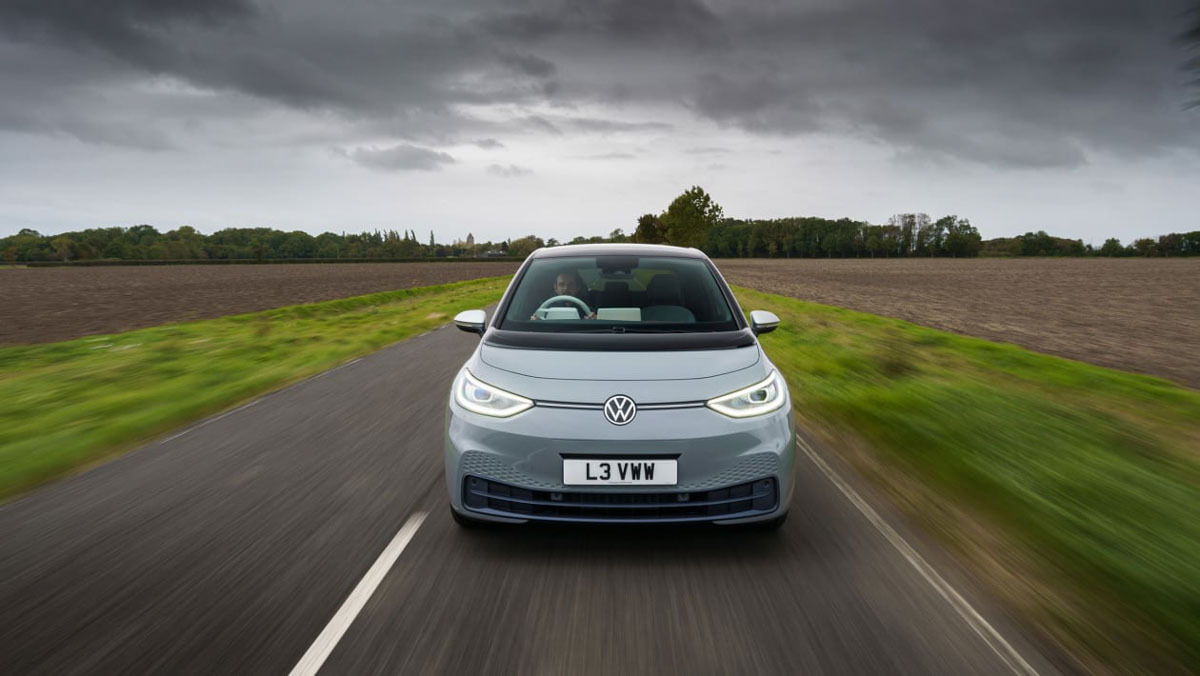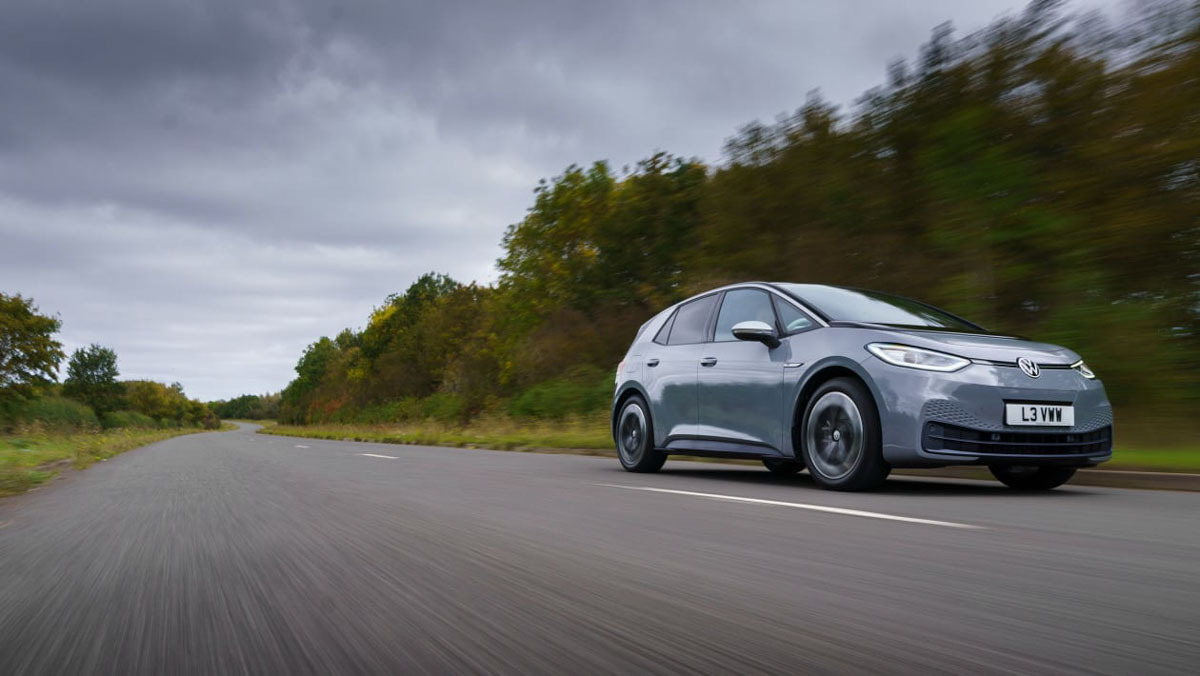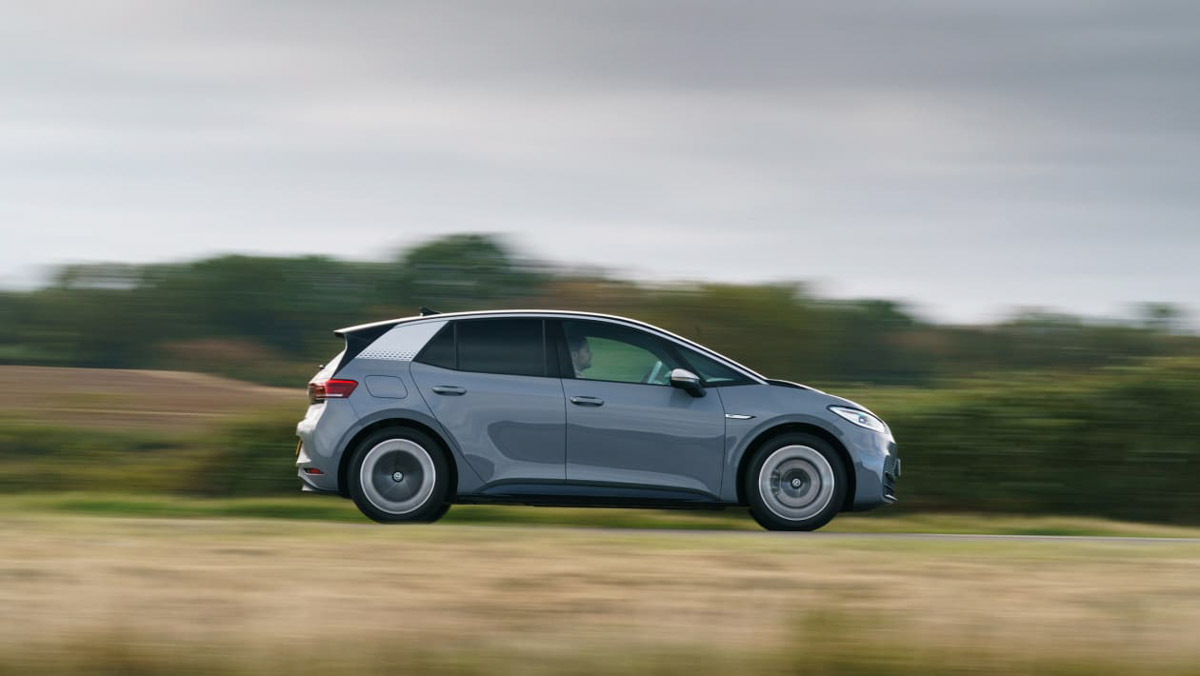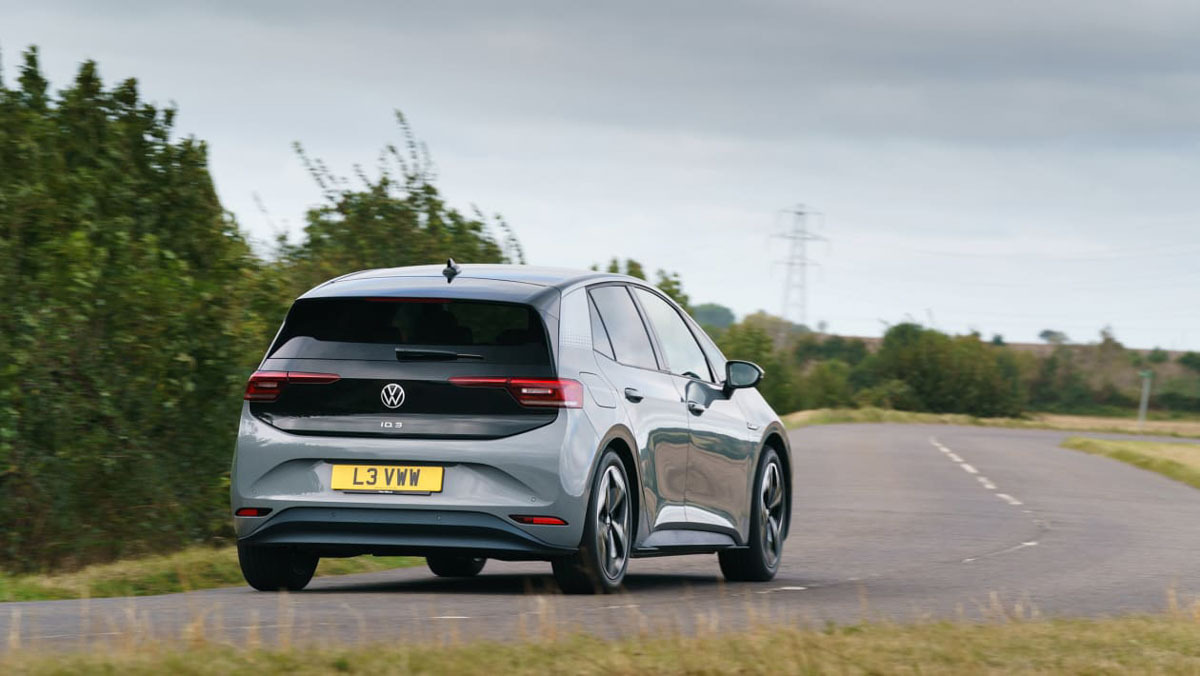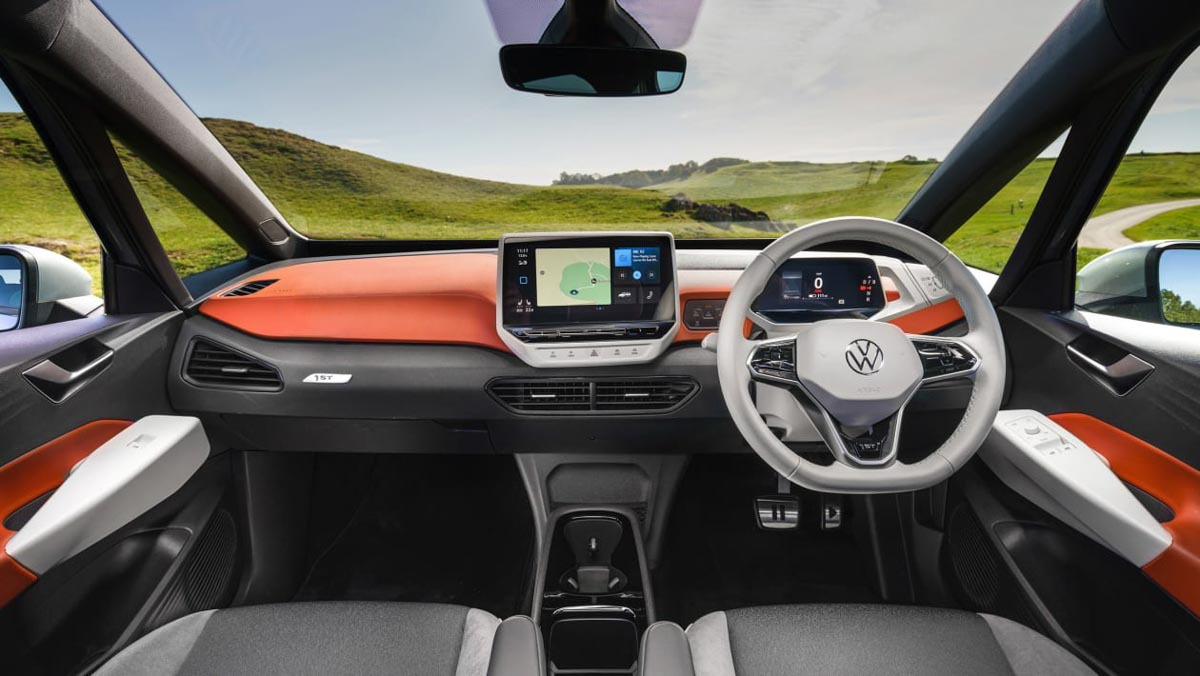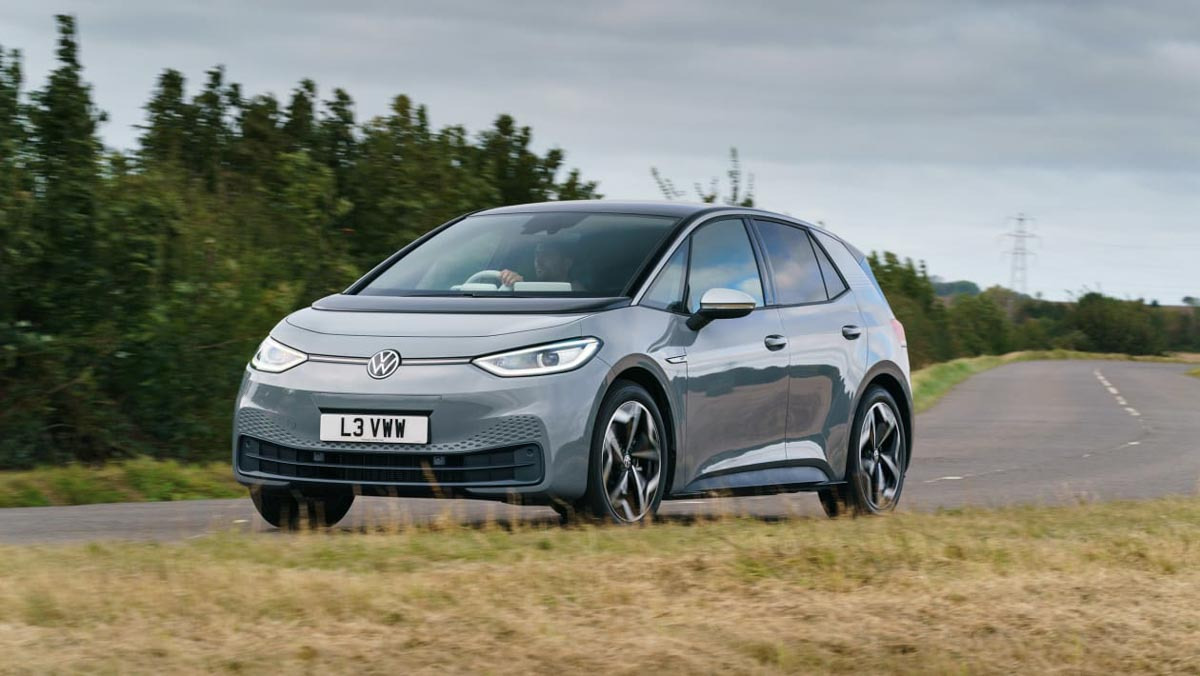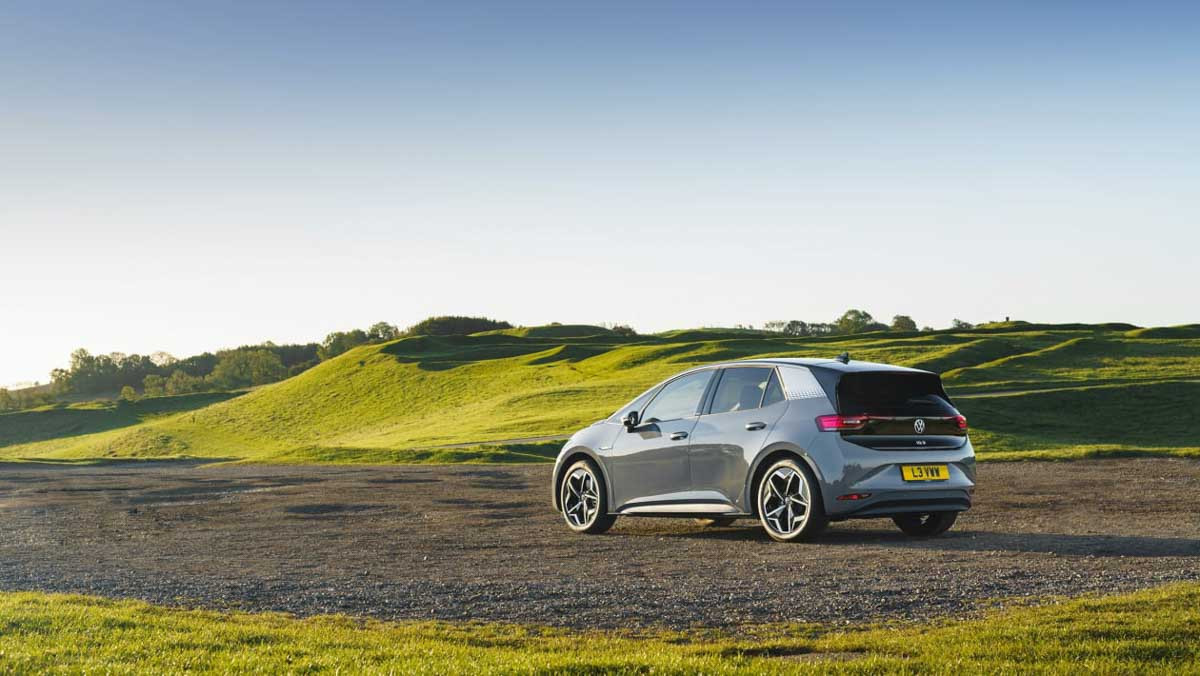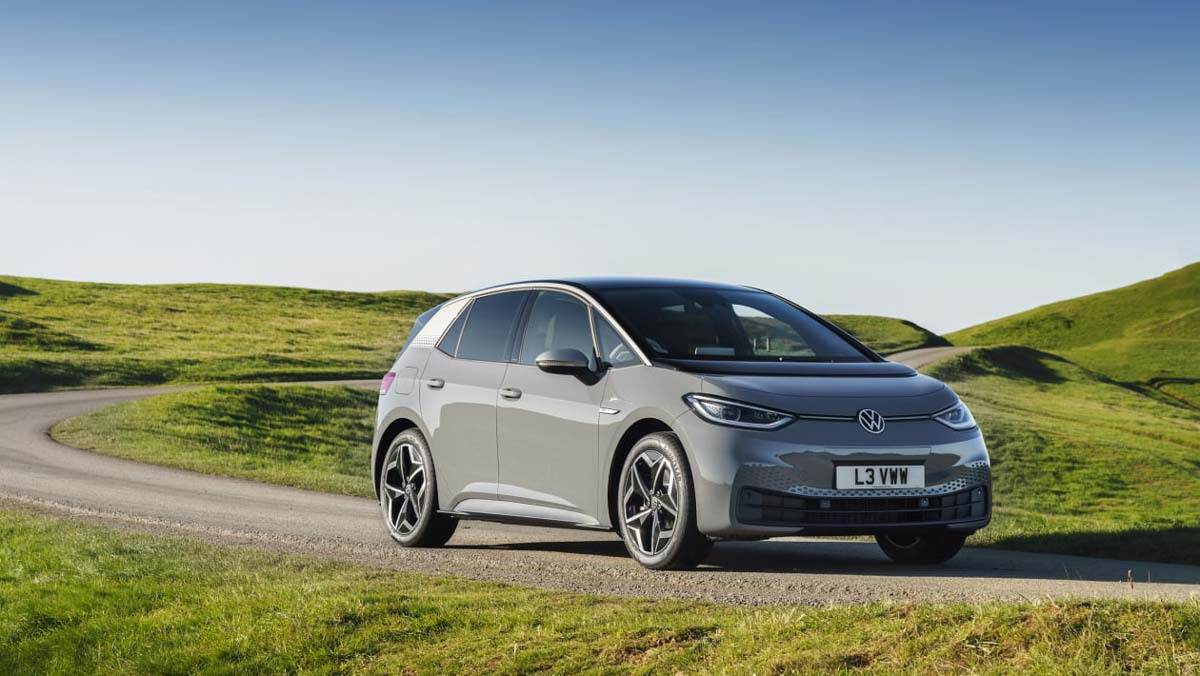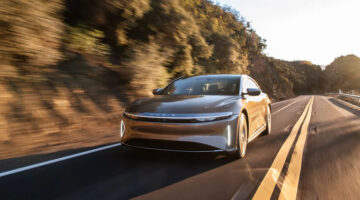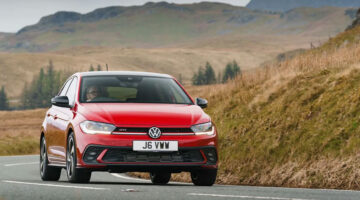Finally there’s a mainstream EV that takes advantage of its elements to be a thoroughly well engineered modern everyday vehicle
| Handles well, impressive packaging, an entirely reasonable everyday car | |
| Some cheap materials inside, brakes feel unnatural |
The ID.3 is an important car for VW. It’s the first model from a ground-up exercise in the creation of not just one battery electric model, but a whole range of different electric cars across the Volkswagen Group on its highly anticipated MEB architecture.
A Golf-sized, high-roof hatchback, the ID.3 will sit right in the middle of its eventual family. Volkswagen is keen to point out some similarities between its new arrival and the original Beetle, not least its rear-engine, rear-wheel-drive layout, but also the notion that it too will mobilise the masses – only this time by electrical means.
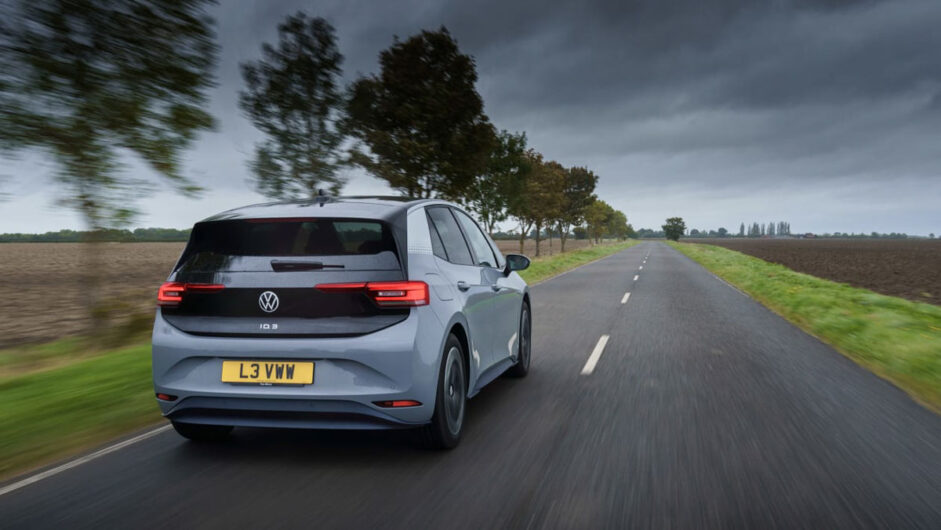
Engine, transmission and 0-60 time
The ID.3’s powertrain comprises a single 201bhp synchronous electric motor mounted within the rear axle and driving the rear wheels via a single-speed gearbox. Torque is rated at 264lb ft and is available from zero rpm, so it’s not hard to tap into.
The motor draws power from a 58kWh (net) battery pack, although later ID.3 models will add 77kWh and 45kWh options. The batteries themselves are stored in a panel that sits underneath the entirety of the cabin, with the axles pushed right out to each corner of the chassis. Despite its Mk5 GTI-like power figure, the ID.3 is not a fast EV, with 100kph taking 7.3sec.
More reviews for Volkswagen
Claimed ranges are just that, claimed, with the 58kWh battery rated at 423 kilometers give or take a few kilometers based on wheel choice. The larger 77kWh option extends this to 533 kilometers, while the smaller 45kWh battery reduces it to 330 kilometers. The two larger battery options are also capable of up to 100kW charging where available.
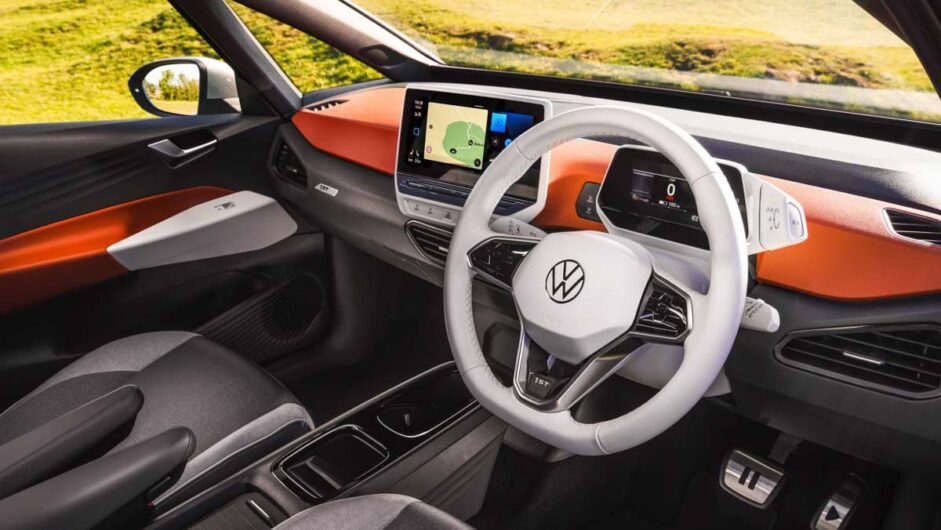
Technical highlights
While the technical components of the ID.3 don’t sound especially different to those of most EVs, it’s the way Volkswagen has packaged the powertrain that makes all the difference. Almost every bit of the chassis is different from VW’s internal-combustion models, designed from the beginning to work exclusively with an electric powertrain and battery pack.
The interior’s impressive packaging is arguably the most advantageous bit for buyers, with a cavernous cabin considering the car’s Golf-like exterior dimensions. Space up front is vast, and the feeling is exaggerated by the compact dash, low scuttle and deep glazing that together totally transform what the ID.3 feels like to sit in. It’s superbly airy, and feels genuinely fresh and interesting.
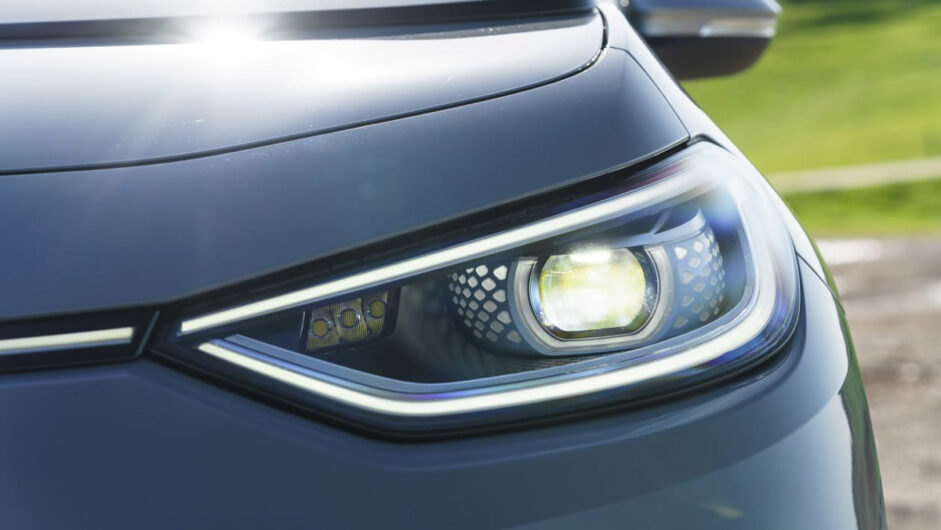
It’s not perfect of course. The interfaces, both digital and physical, are nice to look at but can be frustrating to use on the move. The minimalism implied by many of the elements, such as removing the rear window switches and not having physical buttons for volume or temperature, really only add complexity in practice, as these functions would be easier to operate with simple buttons.
The ID.3’s design minimalism also highlights the quality, or lack thereof, of the materials, which are frankly below the standard expected of a car at this price point. Then there’s the design itself, which inside and out lacks the innovation or interest of the now six-year-old BMW i3, a model which shares both the ID.3’s shape and ethos.
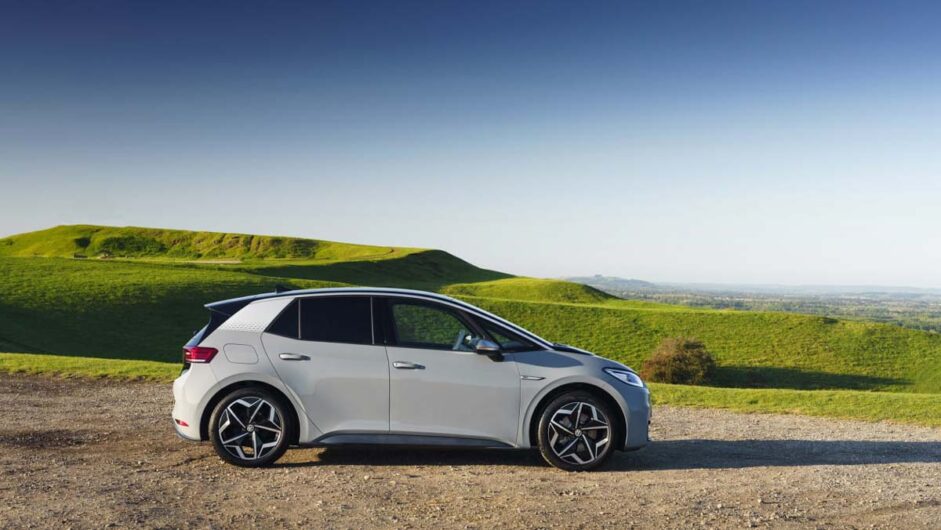
What’s it like to drive?
Obviously our first instinct was to try to find the traction control button and see if the ID.3 could be turned into a drift king of a family car. Unfortunately those antics are quite off the menu, but greasy roundabouts do reveal a willing chassis buried underneath. But considering the ID.3 is an entirely rational everyday driver that’s also electric, there’s plenty to like. To start with, there’s a definite sheen to the chassis and controls. The ride is firm, yes, but it’s also well damped, and feels capable of handling the inevitable mass of the battery pack.
Despite the tall roof, the ID.3 feels controlled, composed and is impressively engineered. There’s no kickback through the steering wheel, and the steering itself is well weighted, accurate and has enough heft to remind you there’s over 1800kg of car under your control. Unlike some EVs, which completely fall apart once the road starts to ruche, the ID.3 feels like it’s been designed to handle its mass with the same attention to detail as something like a Golf, which of course it has.
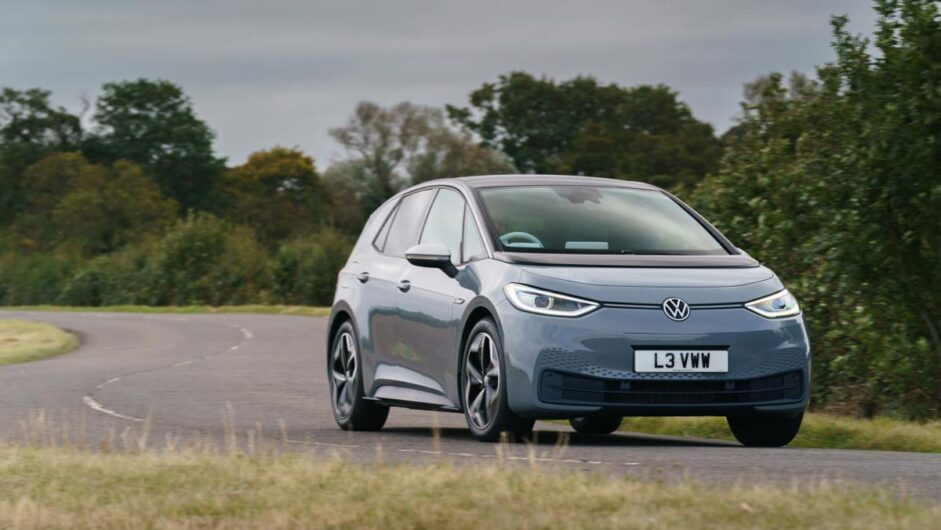
As a default the ID.3 only activates its regenerative braking when it senses either a car in front slowing, or when approaching a junction. While this won’t bug everyone, I found it infuriating, so reverted to the ‘B’ function on the selector to manually engage the regen. Its effect is not quite strong enough for full one-pedal driving, but it is at least consistent. Regenerative braking also comprises most of the braking performance from the brake pedal itself, the car only calling upon its friction brakes for heavier stops. Like all EVs and hybrids there is still a slightly odd feel underfoot due to the blending of regen and friction braking, but overall power from the brakes is just fine.
Driven in the colder months and at motorway speeds for a number of kilometers, our usage patterns were hardly ideal for the ID.3 or indeed any BEV. Despite the claimed 423-kilometer range of the 58kWh First Edition, after a night on charge and back up to full it read 335 kilometers on a 7 degree morning, before almost instantly dropping to 305 kilometers after setting off. From that point on though, the battery usage was fairly consistent with the on-board trip computer’s predictions.
The overarching impression with the ID.3 is that it feels like exactly what it is: a bespoke, built-for-purpose interpretation of a modern electric family car. It’ll annoy some with its new interfaces, and disappoint others by not quite feeling as special as a BMW i3, but in reality it is every bit as good as VW needs it to be.
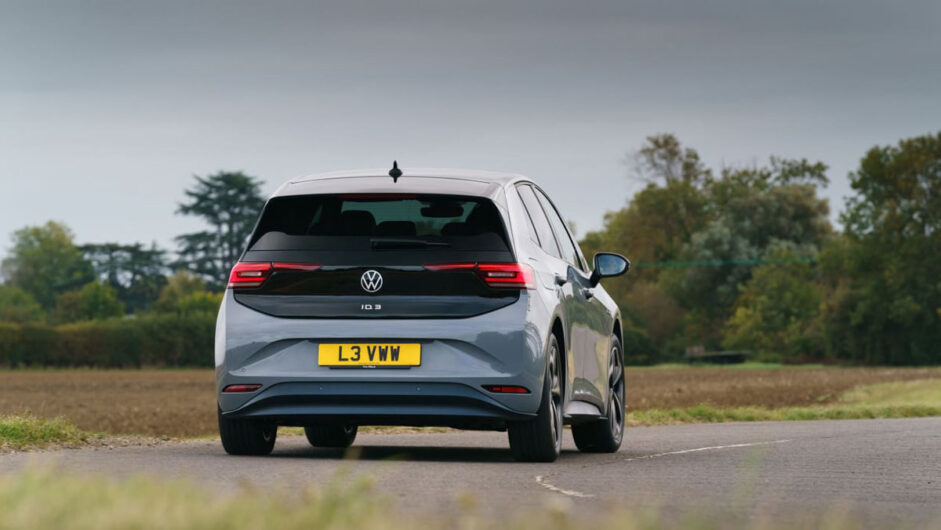
Price and rivals
The range tops out at $68,000 for the ‘Tour’ version featuring that bigger 77kWh battery pack. BMW’s i3 and i3S are hover further up the pricing scale on both sides of $65k, yet have a big deficit in range with around 160 kilometers less on paper compared to the standard ID.3.
Key mainstream rivals include the Nissan Leaf, Renault Zoe and Hyundai Kona Electric, although all these cars share underpinnings with combustion-engined siblings. Still, pound for pound many have equivalent ranges and are around the same sort of money with the grants taken into account, yet none feels as well engineered or thought out as the VW. Sounds like business as usual then.
This article originally appeared at evo.co.uk
Copyright © evo UK, Dennis Publishing


